‘Foreigners Everywhere’, proclaims the title of the 60th La Biennale di Venezia, curated for the first time by a curator from South America, Adriano Pedrosa. “Wherever you go and wherever you are you will always encounter foreigners— they/we are everywhere,” Pedrosa explains… and “no matter where you find yourself, you are always truly, and deep down inside, a foreigner.” Guided by this principle, the Biennale will highlight artists never shown before on this global stage, including queer, outside, folk and indigenous artists, specially from the Global South. What counts as art, what does an artist look like, where do they come from — the periphery and the margin now become the centre. Alongside art from other often overlooked regions of the world, visitors to the 60th edition of the oldest and largest art biennale will have the opportunity to discover some of South Asia’s rich art history and dynamic contemporary practices.
Here we take you through the unmissable artists, art collectives and creative collaborations from India on view at Venice during the Biennale.
1. Journey into India’s rich art history: From past to present
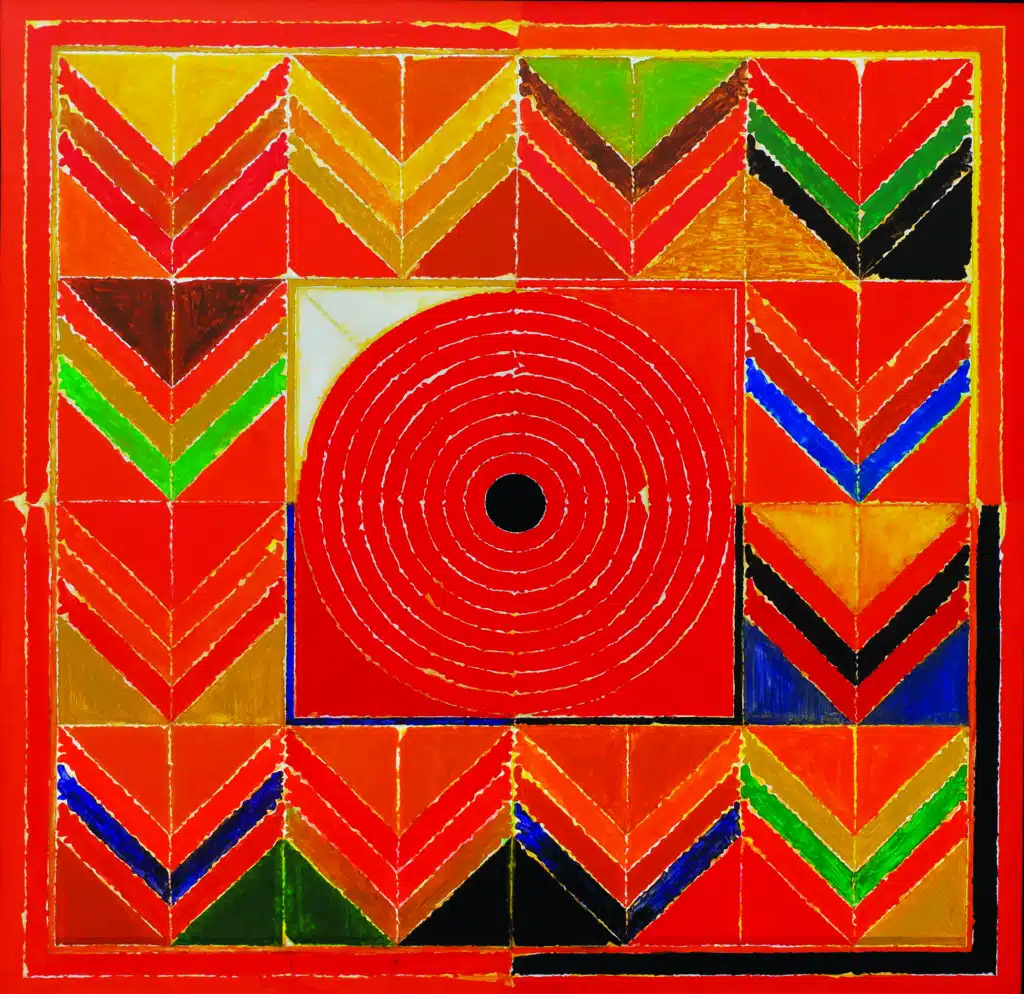 S.H. Raza is known for his pioneering work in Indian abstraction. S.H. Raza. Nidhi, 1988, Courtesy of Dhoomimal Art Gallery.
S.H. Raza is known for his pioneering work in Indian abstraction. S.H. Raza. Nidhi, 1988, Courtesy of Dhoomimal Art Gallery.
The future is shaped by the past! The ‘Historical Nucleus’ section of the main exhibition of La Biennale di Venezia will be dedicated to unearthing the comparatively unknown modernist movements arising in twentieth-century Latin America, Asia, Africa, and the Middle East. Here among artists such as Etel Adnan, Joaquín Torres-García and Selwyn Wilson, find gems of India’s rich history of modernism. The section will include examples from the monumental female portraits of Amrita Sher-gil alongside the often overlooked ones by B. Prabha, textile tapestries of the pioneering weaver Monika Correa, surreal narrative paintings of Baroda School’s Bhupen Khakhar, the Bengal School master Jamini Roy, the iconoclastic Bombay progressive F.N. Souza, and abstract works by Ram Kumar and S.H. Raza included in a room of 37 abstractionists from around the world.
The Biennale’s landmark edition is also set to spotlight India’s pioneering art collective, Aravani Art Project, bringing their bright, bold, and colourful mural work to the contemporary section of the Biennale.
2. Enter into a Cosmic Garden
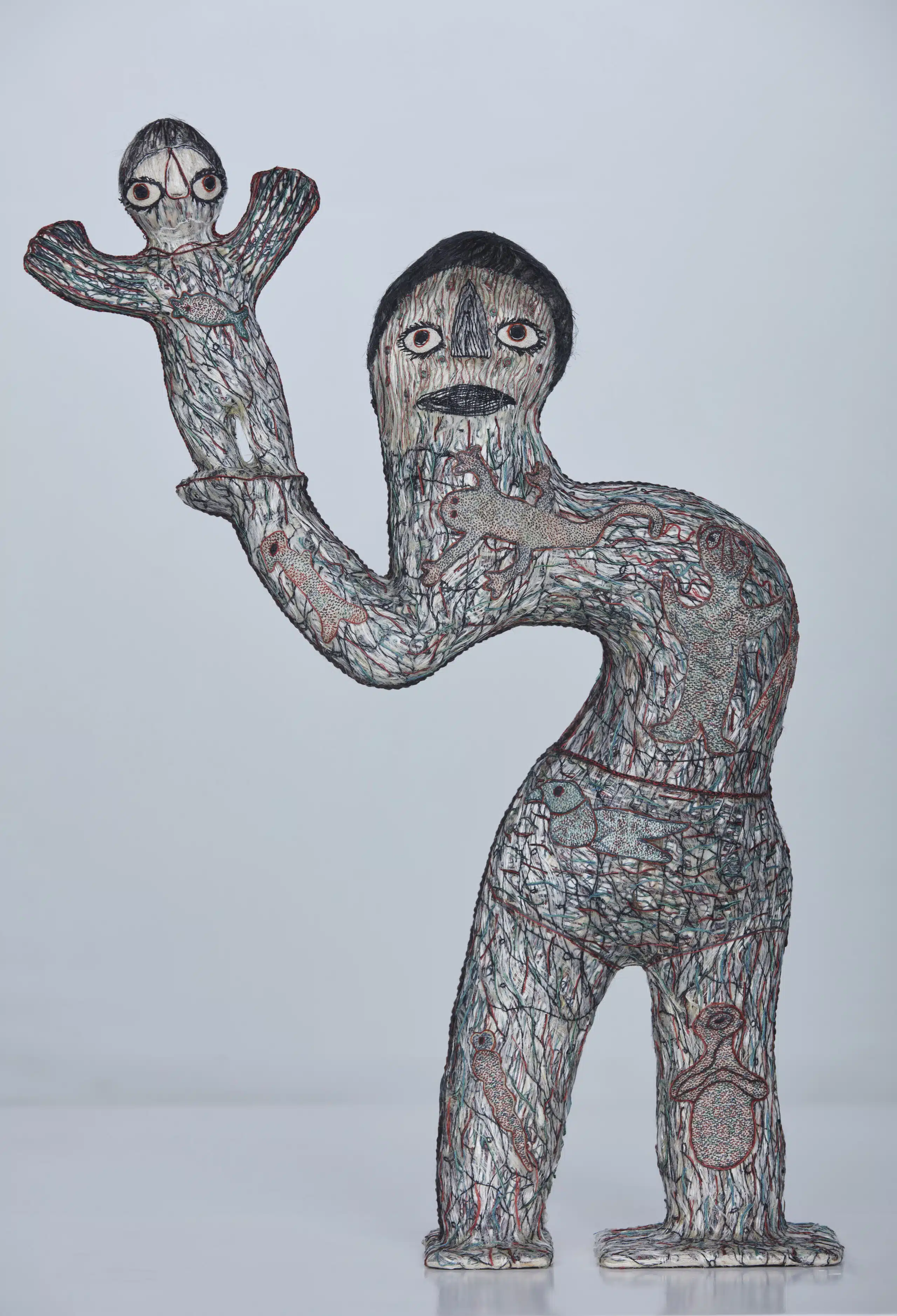
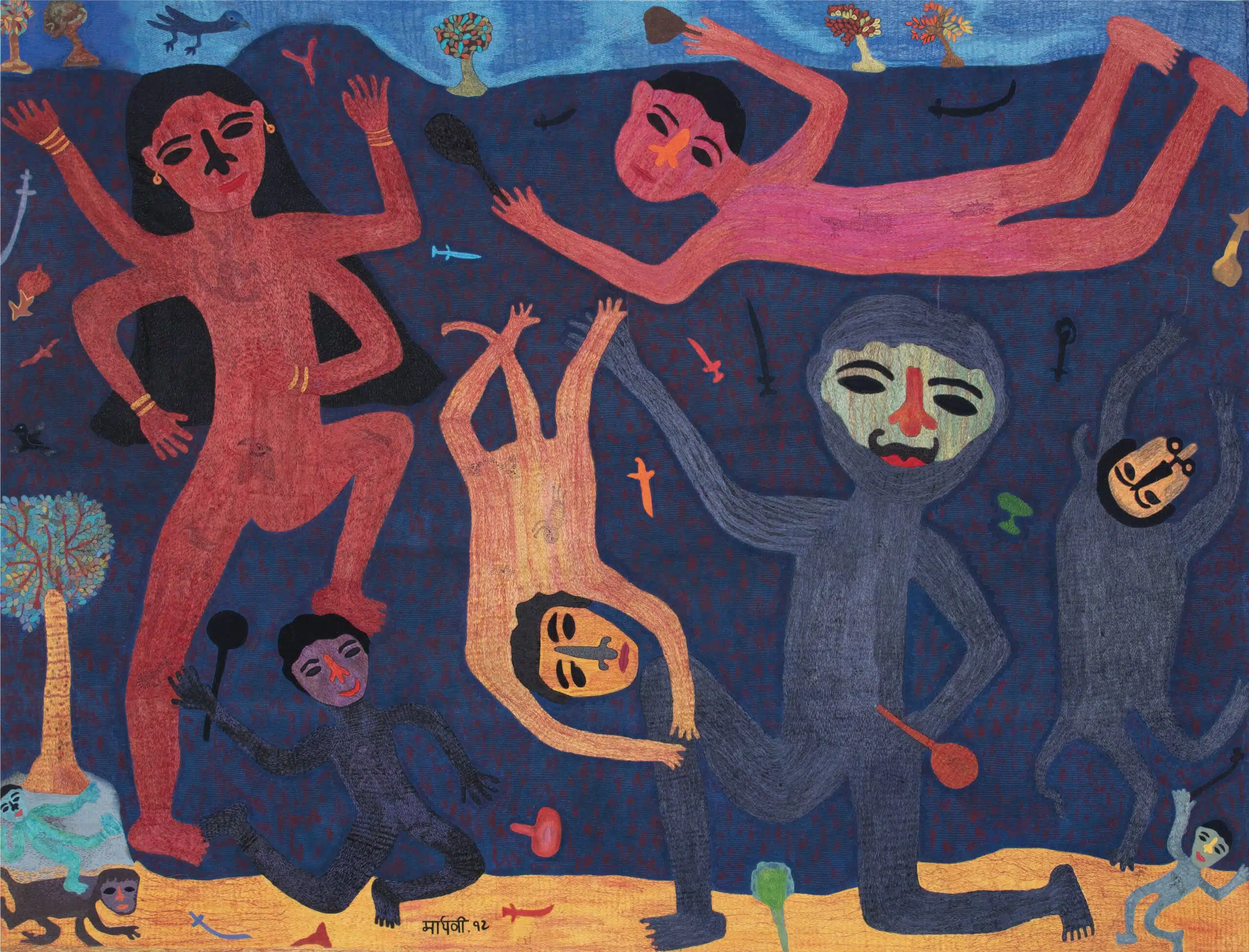 Top: Madhvi Parekh, Karishma Swali & Chanakya School of Craft, Father & Son, 2023, Paper mache, organic jute, linen and cotton thread, 55 X 18 X 76 cm , Photo by Adner Fernandes and Courtesy of the Chanakya Foundation; Bottom: Madhvi Parekh, Karishma Swali & Chanakya School of Craft, Devi & Asura, 2023, Organic jute, cotton, linen and raw silk thread on cotton textile, 286 x 340 cm, Photo by Ryan Martis and Courtesy of the Chanakya Foundation.
Top: Madhvi Parekh, Karishma Swali & Chanakya School of Craft, Father & Son, 2023, Paper mache, organic jute, linen and cotton thread, 55 X 18 X 76 cm , Photo by Adner Fernandes and Courtesy of the Chanakya Foundation; Bottom: Madhvi Parekh, Karishma Swali & Chanakya School of Craft, Devi & Asura, 2023, Organic jute, cotton, linen and raw silk thread on cotton textile, 286 x 340 cm, Photo by Ryan Martis and Courtesy of the Chanakya Foundation.
Before exploring more of the Biennale’s offerings, head to the Salone Verde – Art & Social Club, to explore Cosmic Garden, an official collateral exhibition of the Biennale, curated by Maria Alicata and Paola Ugolini. The show brings together a stunning range of works by some of India’s pioneering senior contemporary artists, Madhvi Parekh and Manu Parekh, along with collaborative works made with the master textile artists of the Chanakya School of Craft and its Creative Director Karishma Swali. Paintings by the artists hang alongside new collectively-created sculptural and textile works, in a show that challenges the hierarchy between art and craft, and highlights the history of creative collaborations between makers of all kinds in the history of art, specially in South Asia. What emerges is a moving reflection on the spiritual and mythic power of creativity, expressed through the minds and hands of all the artists involved.
3. Deep dive into the archive of India’s most famous artist
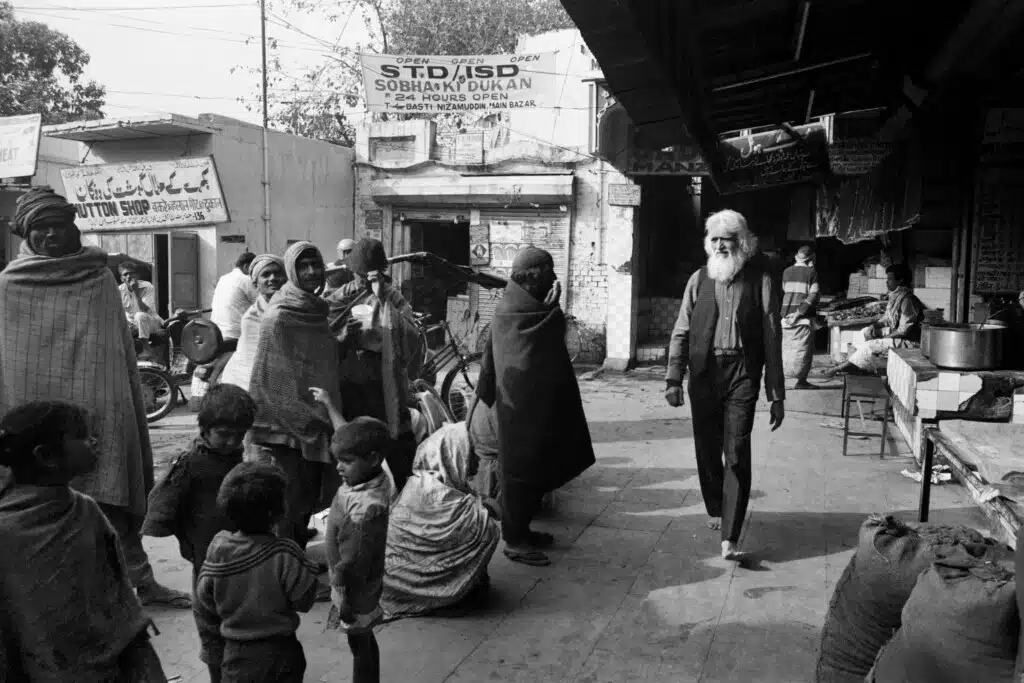
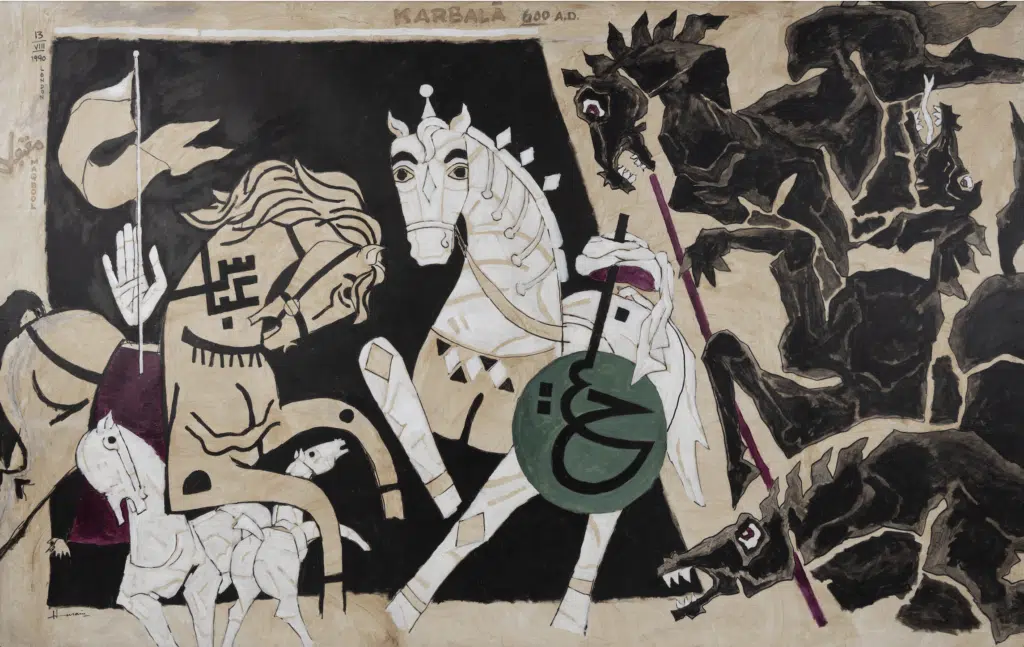
Top: Maqbool Fida Husain walking the lane at Nizamuddin Dargah, New Delhi, 1995, image courtesy: Parthiv Shah and KNMA; Bottom: M.F. Husain, Karbala, 1990. Oil crayon on paper, 82 x 130 in, Courtesy of the Kiran Nadar Museum of Art.
To wrap up your trip through India’s creative excellence at Venice, pay homage to perhaps the country’s most famous artist, M.F. Husain in a show at the Magazzini del Sale in Dorsoduro, presented by the Kiran Nadar Museum of Art (KNMA). Titled The Rooted Nomad, the exhibition will examine Husain’s life and work and illuminate his range of international influences, references and significance to arrive at a syncretic language in his art. Curated by KNMA Director and Chief Curator Roobina Karode, the exhibition celebrates his versatility as an artist, thinker and writer, juxtaposing his wooden toys, paintings, photographs, letters, snippets from his films, collages, letters and poetry that shaped his vision of India as a richly layered ‘cultural mosaic’.
The 60th La Biennale di Venezia and all events mentioned above take place in Venice, Italy from 20 April to 24 November 2024.


